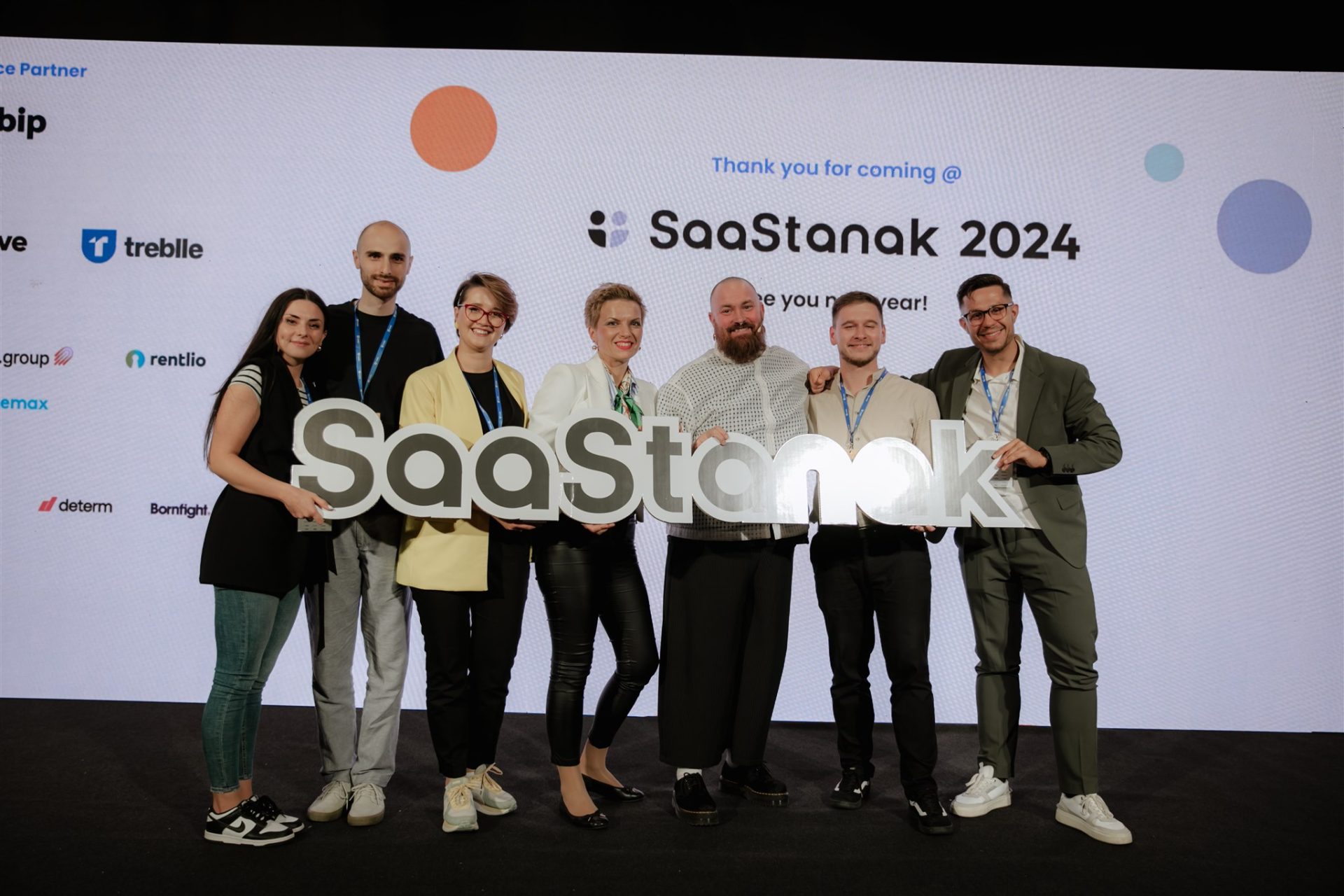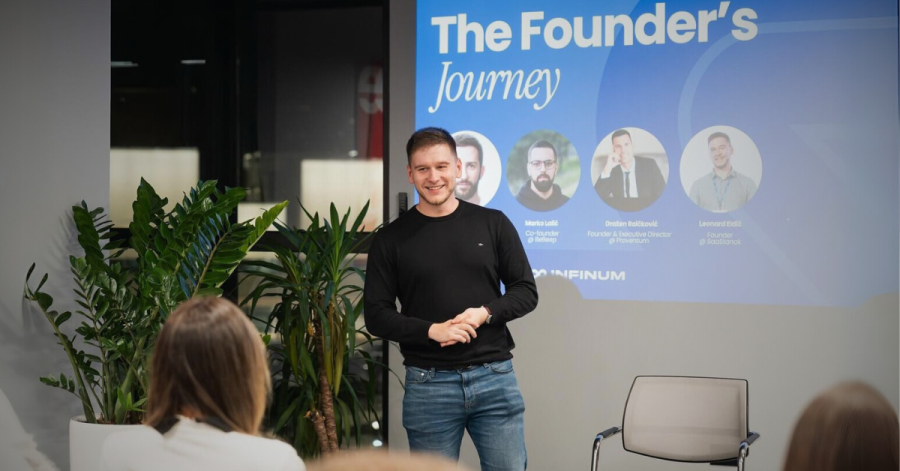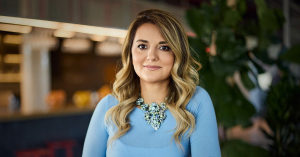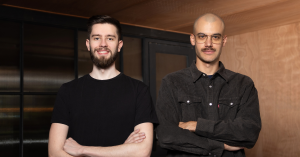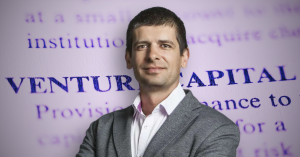“…visiting SaaStr in 2021 in San Mateo was a game-changer. I remember thinking how amazing it would be to host an indoor-outdoor event on the beautiful Croatian coast. And now, we’re finally making it happen! 😊,” shared Leonard Eldić, founder of SaaStanak at the beginning of our conversation on how it all started for the biggest Software-as-a-Service community in the CEE.
“The turning point for me was realizing there’s so much more to this community than I initially thought. There are so many interesting SaaS businesses in the region and founders with truly inspiring stories.”
Started more than 3 years ago in Croatia, SaaStanak spread its wings and expanded to 6 more countries in the past years. After more than 25 meetups and its first two-day conference in Zagreb, SaaStanak 2025 will enter the new year with even bigger milestones.
Its flagship conference SaaStanak 2025 will be the place where SaaS founders and operators from CEE and beyond come together to turn ideas into action. Under the tagline Sun. Sea. SaaS., the next edition will take place in Croatia’s coastal city Šibenik, at the beginning of May 2025.
After a sold-out success in 2024, the upcoming edition will bring together more than 600 industry leaders and top SaaS minds. Another reason for their success lies in addressing not just founders, but also C-levels and high-level operatives, facilitating the type of knowledge exchange that fosters better results.
In the big interview for The Recursive, Leonard Eldić shared more about building SaaS (communities) in the region, their current pains and future prospects. He also gave us a hint on topics awaiting you in May…
Learn more about SaaS in CEE and don’t miss out on Early Bird tickets available until December 31st.
👉 Secure your spot now and join the place where SaaS happens!
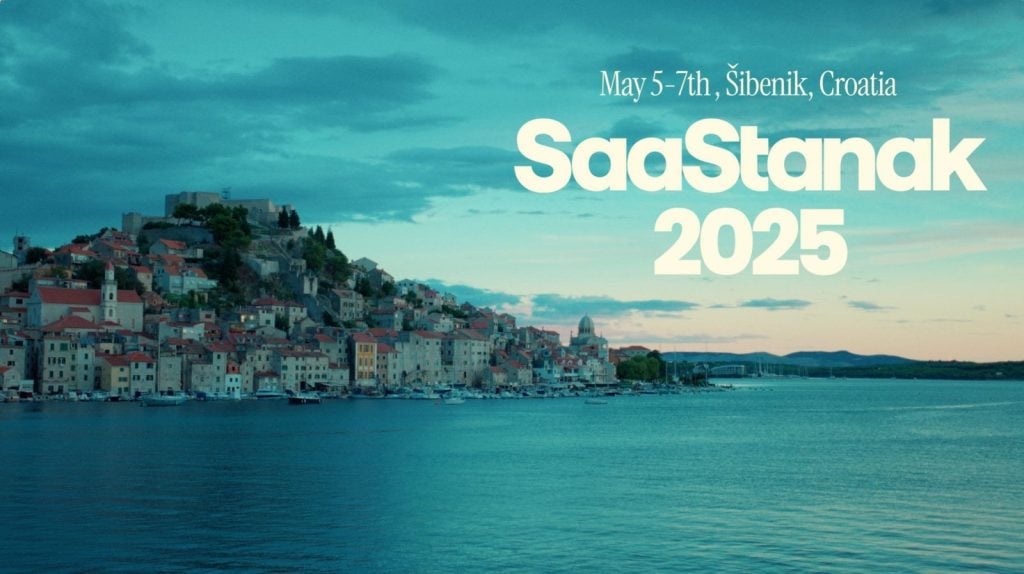
TR: First things first — SaaStanak 2025, what are you preparing for us?
SaaStanak 2025 is set to take place from May 5-7 in Šibenik, Croatia, and it’s an annual gathering of SaaS founders and operators. This year, we’re focusing on connecting self-starters and innovators from Central and Eastern Europe in a laid-back Mediterranean setting that fosters genuine conversations and collaboration.
The conference will feature three days of insightful sessions with a mix of founders and expert speakers. Among the highlights are Amir Salihefendić, the founder of Doist, and Nenad Milanović from CAKE.com, who’ll share their experiences of building successful SaaS businesses. Joining them are product and growth experts like Matt Lerner, formerly of PayPal, and Emilia Korczynska, VP of Product at Userpilot, who will provide practical advice on scaling, product vision, and growth strategies.
Our goal is to bring as many SaaS founders and operators together as possible, creating a space where they can connect, learn from one another, and share their experiences. Topics this year include market expansion, go-to-market strategies, pricing, and building a SaaS brand.
“What makes SaaStanak unique is its relaxed yet purposeful atmosphere—an environment that encourages meaningful connections alongside valuable takeaways. Šibenik’s coastal charm and the thoughtfully curated speaker lineup make SaaStanak 2025 an unmissable event for anyone serious about navigating the SaaS space.”
TR: In your recent blog post, you mentioned that communities can’t be “owned.” What do you think were the key factors to become a good “custodian” to the SaaS community?
It’s about being present, giving back, and fostering genuine connections. Communities thrive when there’s a sense of trust and mutual benefit, and as a “custodian”, it’s essential to focus on creating real value rather than simply extracting it. For me, it’s perfectly fine to have a paid membership model or a for-profit event strategy—those can be powerful tools to sustain and grow a community. When organizers are financially motivated, they’re more likely to keep investing their energy and resources into building something meaningful.
That said, I have no patience for exploitative models, like “course-based” Slack channels or online communities that prey on early-stage founders or professionals eager to upskill. Those setups often overpromise and underdeliver, focusing more on profiting from their audience’s vulnerabilities than genuinely helping them grow. It’s a short-sighted approach that erodes trust and ultimately harms the broader ecosystem.
When I started SaaStanak, my initial goal was simple: to meet everyone. I wanted to connect with as many people as possible, and that mindset became the foundation of the community. I believe that to build a thriving community, you need to start with the same intention—to connect, learn, and share—and to take the lead as the driver of the initiative.
Being a good custodian means prioritizing the long-term health and growth of the community over short-term profits. It’s about showing up consistently, listening to what people need, and building a space where they feel empowered and supported. That’s when you know you’ve truly done your job right.
“While the challenges vary by country, the resourcefulness and adaptability of SaaS founders in this region are consistent”
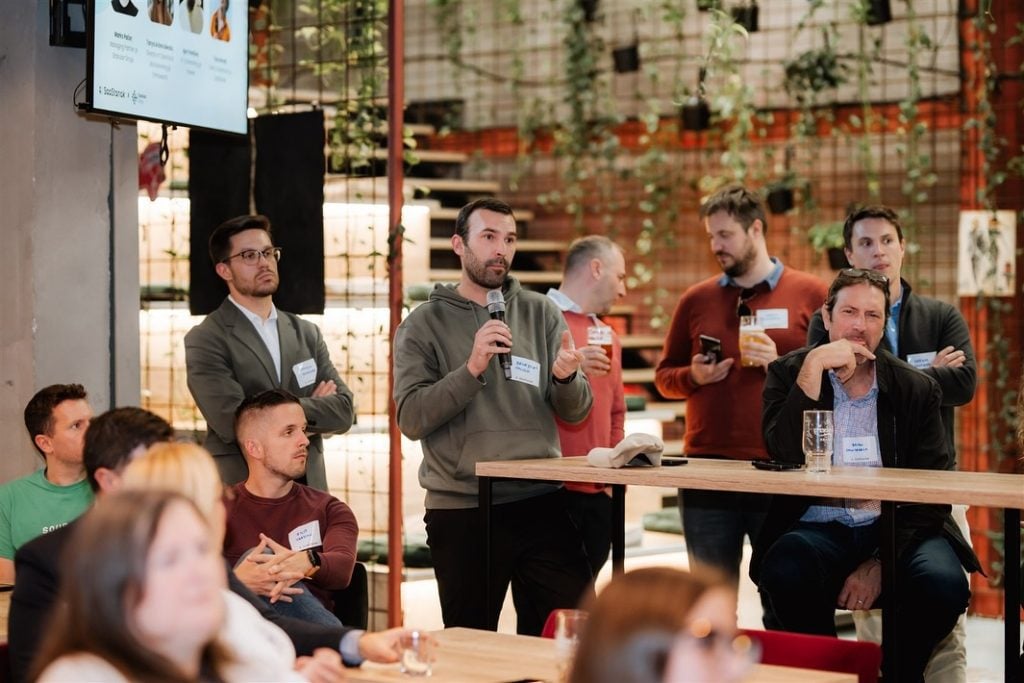
TR: You have spread out to 6 countries in three years. Have you noticed some specific differences in those local SaaS communities – in terms of pains and opportunities that interest them?
One common challenge we’ve observed across these SaaS communities is the limited market size and the difficulty of scaling beyond borders. For many companies, this often boils down to two key issues: a lack of experienced Growth hires in the region and insufficient funds to hire abroad. These challenges force founders to get creative with their strategies. For instance, many of the best SaaS businesses here tend to adopt product-led growth (PLG) models. They rely heavily on SEO, inbound strategies, and self-service models to drive growth because hiring top-tier Account Executives or SDRs for outbound-focused strategies remains a significant hurdle.
That said, there are notable differences in maturity and opportunities between markets. Croatia, Slovenia, and Serbia, for example, stand out for having more mature SaaS products. This maturity is largely driven by the prevalence of outsourcing companies in these countries, which have produced a deep pool of experienced tech talent. Additionally, the strong wage growth in these markets has created pressure for companies to move away from low-margin services and invest in building scalable products.
Interestingly, venture capital hasn’t played as big a role in this transformation as you might expect. The first wave of successful SaaS companies in these regions was largely built by bootstrapped founders or those relying on self-funding. These entrepreneurs took the initial risks, driven by necessity and ambition, rather than by the availability of external funding. While VC funding is becoming more accessible, it hasn’t yet been a major driver of growth in many of these markets.
What’s also fascinating is how these local nuances influence the kinds of opportunities SaaS founders pursue. In smaller or less mature markets, the focus tends to be on creating products that can easily scale globally without heavy upfront investments in sales teams. On the other hand, more mature markets with stronger talent pools have the potential to support more complex and resource-intensive growth strategies, provided they can overcome funding constraints.
Ultimately, while the challenges vary by country, the resourcefulness and adaptability of SaaS founders in this region are consistent. They find ways to turn these obstacles into opportunities, often building globally competitive products from the ground up with fewer resources than their counterparts in larger markets.
TR: Continuing on that, has the expansion to different cities, such as Ljubljana and Belgrade, brought unexpected business or logistical challenges? Any tips for folks who would love to host you in CEE?
None whatsoever – Ljubljana and Belgrade are accessible by car from Zagreb so it’s quite easy to move around both. Skopje and Podgorica are a bit harder because of the flights. I’d love to see a world where we could go from Ljubljana to Zagreb to Belgrade with high-speed rail. I think it would make this region more cohesive, connected, and fun.
For anyone looking to host us in CEE we’re open to collaborate. We bring expert speakers & content and always try to include local founders & operators coupled with people from abroad. I’m especially interested in talking with local communities that want to partner up – that has been the most successful approach so far for us.
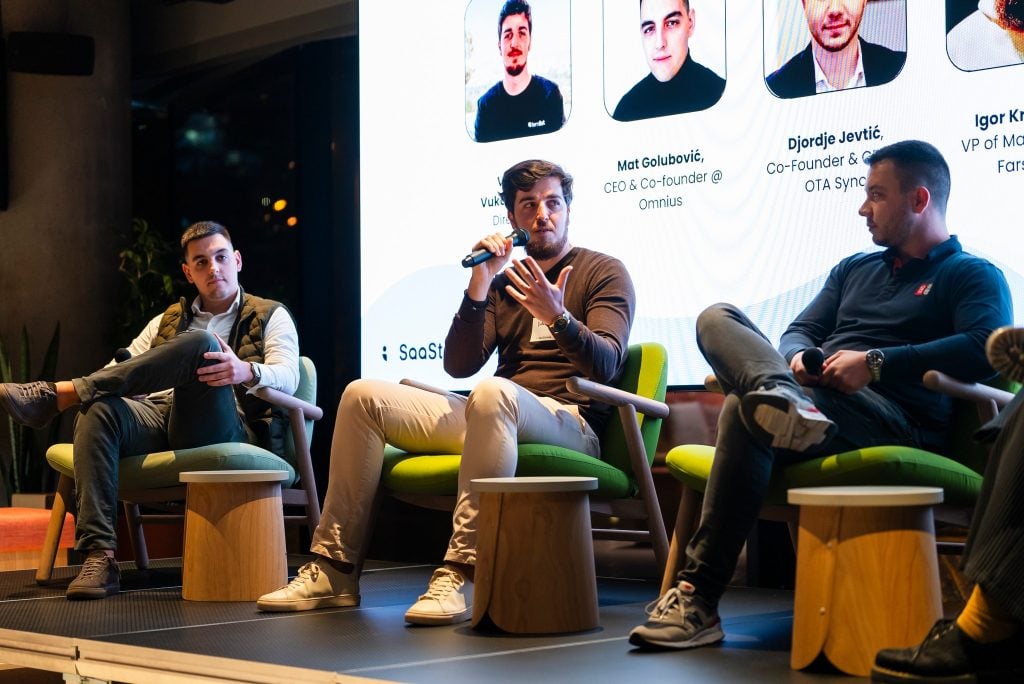
TR: How do you see the SaaS industry evolving in the CEE region?
I think Central and Eastern Europe (CEE) is having a moment right now, gaining recognition as a safe, less regulated, and more affordable part of Europe. The public perspective on the region has shifted significantly, and we have a real opportunity to seize this moment to attract foreign talent and investments.
This shift is something I’ve seen firsthand during my visits to cities like Wroclaw, Krakow, Budapest, and others across the region. There’s a palpable energy and drive to build here—a sense that we’re on the cusp of something big. However, my concern is that this enthusiasm can sometimes tip into stubbornness, which could hold us back from fully capitalizing on the opportunities at hand. For instance, many companies might default to hiring their sales and marketing teams in London, believing it’s the only way to scale, instead of bringing that talent into their own countries and growing the local ecosystem. Similarly, our own growth professionals often look outward, focusing on Western SaaS companies instead of exploring the incredible opportunities right here in the region.
This is exactly why we do SaaStanak. Our conference is about showcasing the talent, ambition, and potential that exist in CEE. It’s a platform to connect founders, operators, and growth talent from across the region, providing them with the insights, tools, and inspiration they need to build and scale. By bringing the community together, we aim to create a shared sense of purpose and foster collaboration that benefits everyone—not just individual businesses, but the ecosystem as a whole.
CEE has the energy, the ambition, and now the attention. It’s up to us to make sure that this moment isn’t just a passing spotlight but the beginning of a sustained transformation for the region. Through initiatives like SaaStanak, we’re working to ensure that happens, one connection and one idea at a time.
TR: Do you think there’s a saturation point for SaaS in specific industries in the region?
Yes, we should stop building for local govs or local solutions. I see too many SaaS businesses focusing on very small niches in their countries. It’s also interesting how many HR tools are there as well – I think it’s a legacy of agencies building SaaS and solving their own problems.
What I think makes sense for us is vertical SaaS for Mid Market/Enterprises, Dev tools, marketplace (Salesforce, Shopify, Atlassian, etc.), and horizontal SaaS for SMBs like time tracking, project management, etc. – although some are also very saturated markets, there’s always a way to innovate there and distribution is easier to solve than pure Enterprise SaaS.
I think it’s quite hard to do any kind of B2C, there are a few successful cases of gaming studios but not a lot of SaaS. People try to do ridesharing or sustainability solutions for example and they’re very disadvantaged here due to the size of the local market.
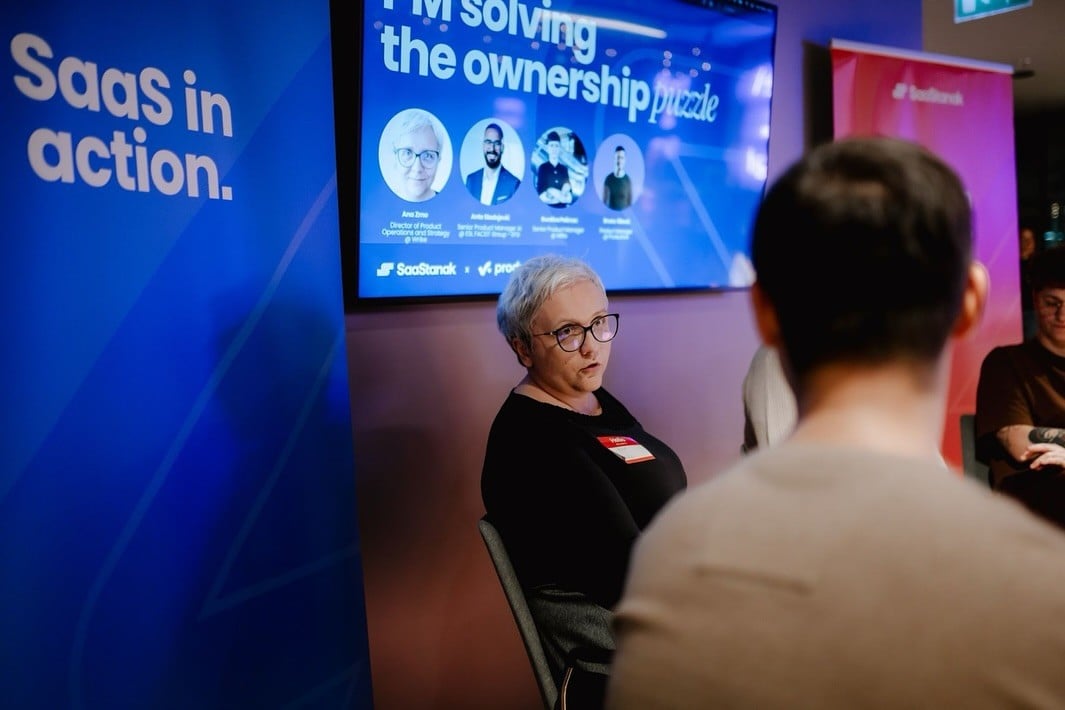
TR: I wanted to find a chance to ask you earlier about David Heinemeier Hansson’s take on “Post-SaaS era” — in what way do you see SaaS business/distribution models evolving in the next 5 and 10 years?
I think Basecamp guys used their reach & that line of thought to promote Once in a perpetual license model. SaaS is not going anywhere, especially with AI. You might see more of a switch to usage-based or value-based pricing models but you can’t really bill perpetual licenses with software that uses cloud architecture and AI. I like the allure of self-hosting software & LLMs but customers want quick & easy and that’s not it.
I think SaaS is evolving into a more efficient industry. You can run most SaaS businesses with high profit margins and I think more founders will turn to that as opposed to going for more growth rounds. What changed in 2022/23 with the advent of AI & growth slowdown is the mindset of doing more with less and that means we’re becoming a more “standard” boring industry focused on efficiency and I think that’s good. SaaS is a utility and more competitive markets mean better products & services for customers.
TR: How do you ensure your content sticks with the audience across various cities and countries?
A key element in creating content for our live events is catering to the needs of the audience. We invest significant time in understanding the community we’re addressing—what their challenges are, what they want to learn, and how we can provide solutions through our events. This approach ensures that the content we create isn’t just relevant but also resonates deeply with attendees across different cities and countries.
Igor and Tina, who handle content for SaaStanak, play a critical role in this process. They work closely with the community, gathering insights, understanding their pain points, and ensuring that every topic we cover and every speaker we invite aligns with the audience’s needs. This hands-on approach ensures our content stays impactful and connected to the people it’s meant for.
Another aspect of ensuring our content sticks is our commitment to bringing in foreign experts who can offer fresh perspectives. For example, at SaaStanak 2024, we invited Poya Osgouei, who not only delivered an outstanding keynote in Zagreb but also made a stop in Belgrade as part of a mini Balkan road tour. Poya gave a masterclass in sales to the local audience, creating a ripple effect of learning and engagement across the region. These kinds of initiatives ensure that the content lives on and impacts multiple communities, not just the main conference attendees.
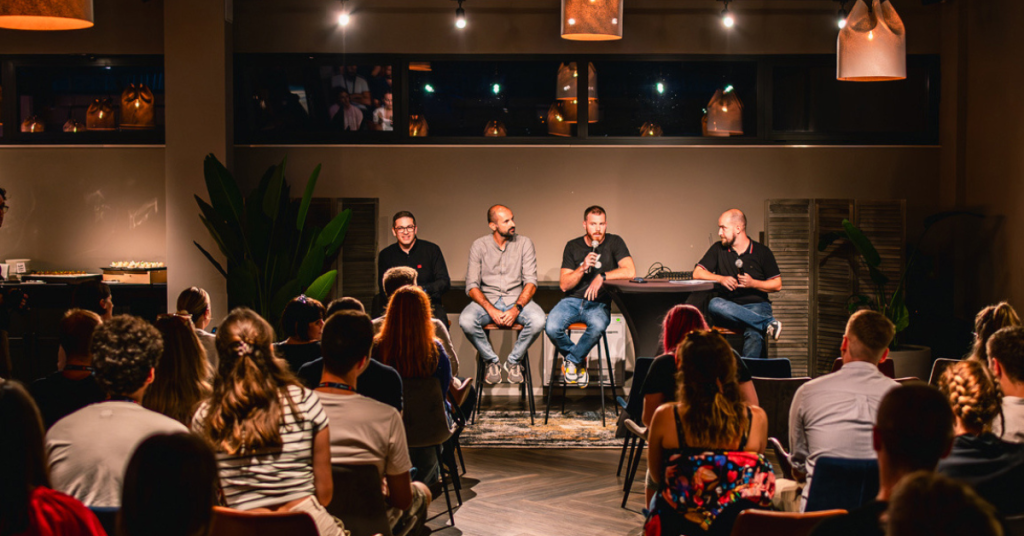
TR: Can you share any memorable success stories or unexpected outcomes from a SaaStanak event?
There are many actually. When you bring founders who have done it with those who are eager to do it, magic happens. Serbian founder Djordje Dimitrijevic from SignAvatar was inspired by Nenad Milanović’s keynote at SaaStanak 2024 so he flew to San Francisco and spent a couple of months there, finding investors and customers alike.
Nick Tomic from Serbia got the idea for his startup Face2Face.io at the same conference as well. He’s now crushing it and sharing his story on LinkedIn daily.
A bunch of folks met their first sales & marketing hires at the conference, some founders ditched their ideas, and some started new. For me, it’s such an awesome effect of what we’re doing.
TR: What has been the most fulfilling part of building SaaStanak for you personally?
What’s been most fulfilling for me in building SaaStanak is the chance to design and shape events that I genuinely love. I’ve always enjoyed events, and now I get to create my own—putting my personal touch into every detail. From our teaser videos, where we invest heavily in creative production, to the logistics of event design like how people move through the venue, where things are placed, and creating spaces that inspire a positive mood—every piece of it fascinates me.
One thing I’m especially obsessive about is having an outdoor component. I believe fresh air helps people think and connect better, so I’m constantly battling with the weather to make sure we can keep that element alive.
What really fulfills me, though, is seeing people genuinely enjoy themselves and have fun. Thinking about all those little details and watching it come together as something people truly appreciate—it’s hard to beat that feeling.
And then there’s the team. SaaStanak core team is a group of absolute lunatics and enthusiasts who share my vision and bring so much energy to the process. Working with them is a joy; they carry the spirit and vibe of what you’re building. Ending an event together, and looking back at what we created as a team, is one of the most rewarding parts of it all.
If you’re curious about what makes people show up, there’s only one way to find out—come to one of our events! 😊
